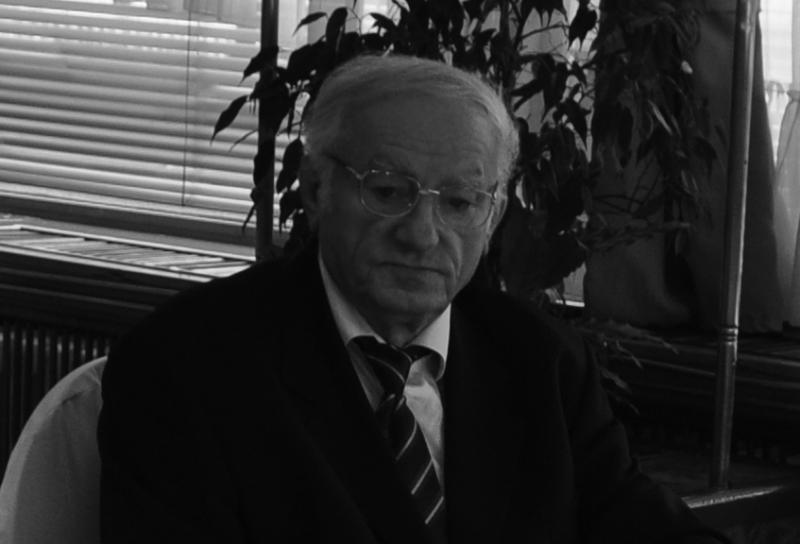Milan T. Stevančević, BSc Eng of Electronics and the founder of the Belgrade School of Meteorology, a tireless researcher of nature and its laws, died in Belgrade on October 18, 2023. For more than two decades, he intensively collaborated with the Department of Physical Geography of the Geographical Institute "Jovan Cvijić" SASA. The result of that cooperation are numerous works, published in national and international scientific journals and presented at scientific meetings.
Milan Stevančević was born on September 30, 1937 in Belgrade, where he completed elementary school and high school, and graduated from the Faculty of Electrical Engineering of the University of Belgrade. In the 1970s, he was appointed head of the Group for Electromagnetic Research of the Radio Frequency Spectrum at the Federal Administration for Radio Communications of the Federal Executive Council, where he had access to the most modern measuring instruments that enabled him to carry out intensive research. Thanks to these studies, he was invited to take part in the work of the International Telecommunication Union, a specialized agency of the United Nations based in Geneva. In 1982, after a stormy discussion, this agency adopted his document under the title: “Degradation of maximum usable sensitivity of FM and AM receivers operating in non-linear conditions”. During the eighties and nineties, he participated in the work of several international conferences and commissions (International Maritime Organisation IMO in London 1983, 1987; World Radio Conference Malaga - Torremolinos 1992; Danube Commission 1985-1995).
Milan Stevančević was also engaged in pedagogical work (as a professor at the Electrical Engineering School "Nikola Tesla" in Belgrade), as well as in music (as a trumpeter in the popular band "Amigos"). He also worked on the construction and maintenance of musical instruments and equipment (amplifiers).
However, Milan Stevančević made by far the most significant contribution in the field of natural sciences. Together with Nedeljko Todorović, a graduate meteorologist, Milan Radovanović, PhD, principal research fellow and the director of the Geographical Institute "Jovan Cvijić" SASA, and Vladan Ducić, PhD, full professor of the Faculty of Geography of the University of Belgrade, he founded the Belgrade School of Meteorology. Milan Stevančević was the founder of a new scientific discipline called "Heliocentric Electromagnetic Meteorology", which laid the foundations for a completely new approach to the study of nature. According to his research, most of the natural phenomena on our planet are under the direct influence of charged high-energy particles of solar wind. In this way, revolutionary changes in meteorology, seismology, volcanology, forest fire research, and even in medicine and agriculture were made possible. In the following years, the natural sciences will be irrevocably changed by the achievements of Milan Stevančević. The possibility of predicting natural disasters (hurricanes, floods, earthquakes, fires, pandemics, etc.) should be highlighted here. The results of Milan Stevančević's research were published in 10 volumes of the Belgrade School of Meteorology in the period 2008–2019 and in the publications Theoretical Foundations of Heliocentric Electromagnetic Meteorology (2006) and Theoretical Foundations of Heliocentric Electromagnetic Seismology (2022). Most of these publications can be found at the following link: http://www.meteologos.rs/beogradska-skola-meteorologije/
Selected papers of Milan T. Stevančević, BSc Eng (scientific journals, meetings, book chapters):
Radovanović M, Stevančević M, Štrbac, D. (2003) Influence of the solar wind energy on the atmospheric processes. Geophysical Research Abstracts 5, 13963, European Geophysical Society.
Radovanović M, Stevančević M, Štrbac D. (2003) A contribution to the study of the influence of the enregy of solar wind upon the atmospheric processes. Journal of the Geographical Institute “Jovan Cvijić” SASA 52(1), 1-18.
Stevančević M, Radovanović M, Todorović N. (2004) The possibility of application of electromagnetic method in mid term weather forecasting. In: Proceedings of the Collection of Papers EkoIst'04 Ecological Truth, Bor, Serbia, 2004, pp. 396-399.
Stevančević M, Radovanović M, Todorović N. (2006) Analysis of characteristic mistakes in the heliocentric electromagnetic long-term forecast. In: Proceedings of the "Tourist Valorisation of Tara" Theme Collection of the Geographical Institute "Jovan Cvijic" SASA and Sport-Recreative Center Bajina Bašta, Belgrade, Serbia, 12–15 June 2006, pp. 101-110.
Stevančević M, Radovanović M, Štrbac D. (2006) Solar wind and the magnetospheric door as factor of atmospheric processes. In: Second International Conference 'Global Changes and New Challenges of 21st Century', 22-23 April, Sofia, Bulgaria, pp. 88-94.
Pereira Gomes JF, Radovanović M, Ducić V, Milenković M, Stevančević M. (2009) Wildfire in Deliblatska pescara (Serbia) - case analysis on July 24th 2007. In: Forest Fires: Detection, Suppression and Prevention, Nova Science Publishers, New York, pp. 89-1401 (book chapter).
Radovanović M, Stevančević M, Milijašević D, Mukherjee S, Bjeljac Ž. (2011) Astrophysical analysis of earthquake near Kraljevo (Serbia) on 3 November 2010. Journal of the Geographical Institute “Jovan Cvijić” SASA 61(3), 1-15. DOI: 10.2298/IJGI1103001R
Radovanović MM, Milovanović BM, Pavlović MA, Radivojević AR, Stevančević MT (2013) The connection between solar wind charged particles and tornadoes: Case analysis. Nuclear Technology and Radiation Protection28(1), 52-59. DOI: 10.2298/NTRP1301052R
Radovanović M, Vyklyuk Y, Jovanović A, Vuković D, Milenković M, Stevančević M, Matsiuk N. (2013) Examination of the correlations between forest fires and solar activity using Hurst index. Journal of the Geographical Institute “Jovan Cvijić” SASA 63(3), 23-32. DOI: 10.2298/IJGI1303023R
Radovanović MM, Vyklyuk Y, Stevančević MT, Milenković MĐ, Jakovljević DM, Petrović MD, Malinović-Milićević SB, Vuković N, Vujko AĐ, Yamashkin A, Sydor P, Vuković DB, Škoda M (2019) Forest fires in Portugal - case study, 18 June 2017. Thermal Science 23(1), 73-86. DOI: 10.2298/TSCI180803251R
Date: October 31, 2023
Source: Geographical Institute “Jovan Cvijić” SASA
Photos:


















